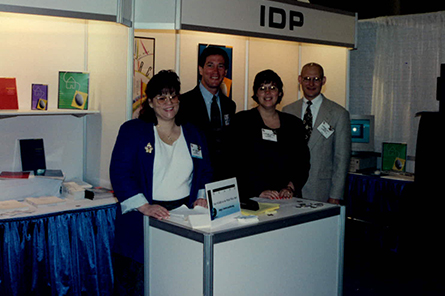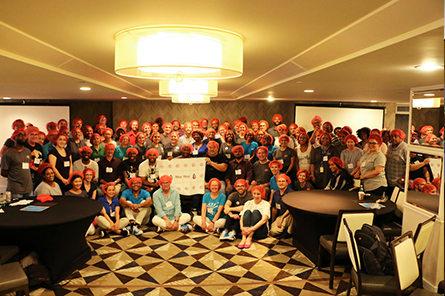NCARB Staff
As NCARB’s programs and responsibilities grew, the Council’s staff size grew with them—evolving from a team of one to more than 100 subject-matter experts, with responsibilities ranging from outreach to data science.
VIDEO: Staff
Learn how the Council's staff has grown from a one-man team to a group of over 100 subject matter experts.

The Evolution of NCARB Staff
A One-Man Team
In the 1920s and early-1930s, NCARB relied on Emery Stanford Hall to perform all of the Council’s administrative work free of charge. From time to time, NCARB had sufficient funds to employ an assistant for Hall. But when the Council’s revenues dropped during the Great Depression, NCARB could no longer afford the assistant, and Hall paid for many of NCARB’s expenses out of his own pocket.
By the time the Council moved to Chariton, Iowa, in 1939, NCARB employed a handful of secretaries who were responsible for compiling and transmitting Records under the leadership of President-turned-Secretary/Executive William L. Perkins.
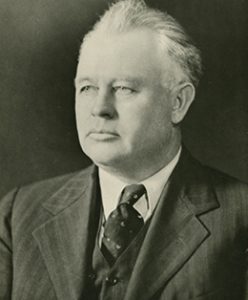
“All of us working together for the profession of architecture keeps the standards at a higher level. We have the finest office staff obtainable and we wish to record our thanks for a job well done and their many courtesies throughout the past year.”
Challenges and Changes
When NCARB moved to Washington, DC, in 1962, successful operations required a staff of seven: several secretaries, a technical assistant, an administrative assistant, and the recently created position of executive director (previously, the NCARB secretary had managed the Council’s day-to-day operations). Upon arriving in DC, three of NCARB’s five employees quit—a preview of the period of high staff turnover that lasted throughout the 1960s.
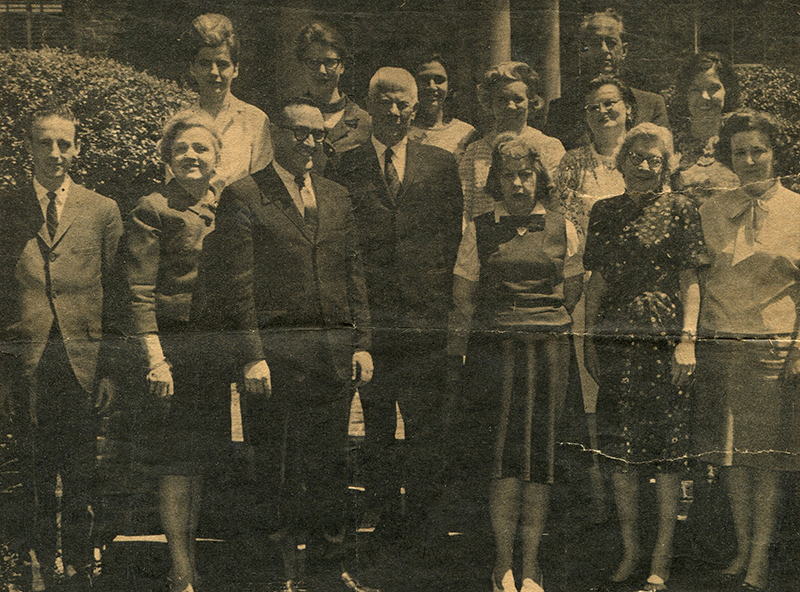
In part, the problem was due to inconsistent leadership: of NCARB’s 10 executives, four served during the 1960s. However, demand for NCARB Records and Certificates had never been higher. With no clear plan to follow but an increasing need for a larger staff and efficient services, day-to-day work fell below the standards expected by the Council’s Member Boards and customers.
In 1968, Executive Director Hayden P. Mims took control of NCARB’s administration; a retired colonel, Mims’ began to break down the Council by department—initiating the model that led to NCARB’s current structure.
“There were two desks in the front, a receptionist, and secretary to the Executive Director, Hayden Mims. There was someone in the accounting office. ... A mail clerk ... probably three or four people compiling Council Records, a couple of people organizing them. I’d say that there were probably no more than 17 or 18 people.”
Subject-Matter Experts
In the 1970s and 1980s, the launch of national programs like the Architect Registration Examination® (ARE®) and Intern Development Program (IDP) necessitated significant staff growth, including many subject-matter experts who helped reduce the heavy burden on volunteers. When Samuel T. Balen took on the role of executive director after Mims’ retirement, he continued to evolve the structure of staff to meet the organization’s needs. Balen also worked to modernize the Council, helping NCARB transition to new computer-processing systems and staying on through the launch of NCARB’s first website in 1996.
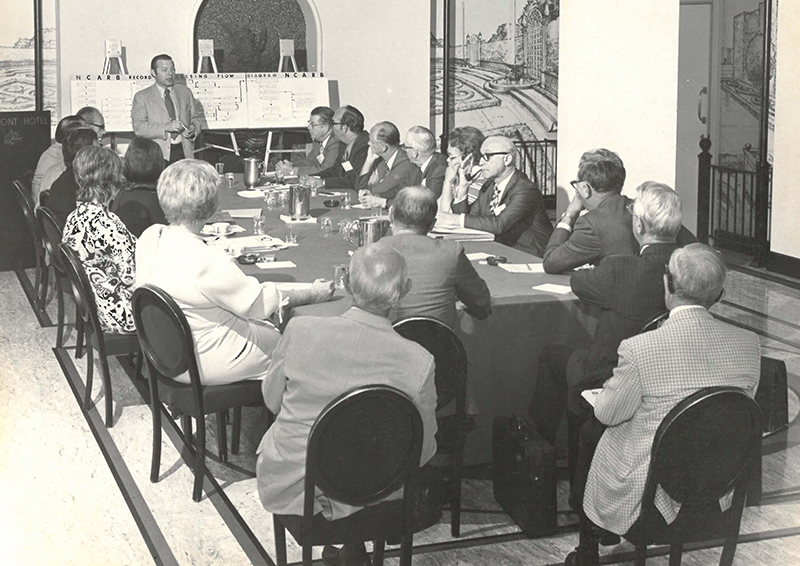
As of 1981, NCARB employed 23 individuals, whose responsibilities ranged from Record management to board support to program development. The number of staff members grew rapidly over the next several decades as more roles were needed for education, experience, and examination programs, as well as outreach, data, customer service, public relations, computer technology, and more.
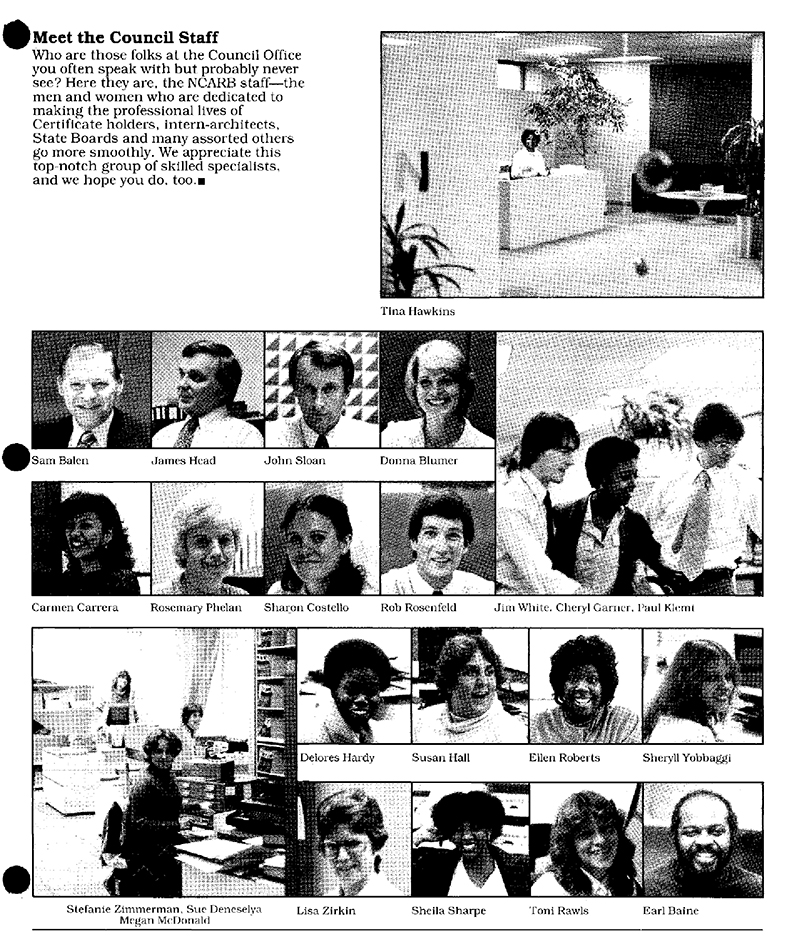
Organization and Re-organization
Under the leadership of new Executive Director Lenore M. Lucey, NCARB turned its focus to improving customer service—continuing Balen’s technology momentum by making many services available online and hiring the staff required to support them. To align with its new priorities, the Council needed to reorganize—between 2007 and 2009, staff leadership worked with consultants to conduct a business process re-engineering. The result was the introduction of two new vice president positions and the reorganization of staff directorates.
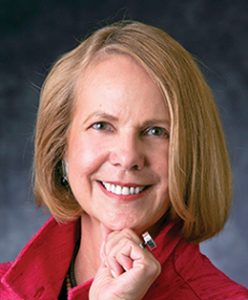
“NCARB’s senior staff leads a group of dedicated employees who are committed to providing the best possible customer service experience to all of you.”
Lucey continued to shuffle directorates until her departure from the Council in 2011. One of the largest areas of focused growth was NCARB’s Information Systems Directorate. Originally a small part of the Administration Directorate, Information Systems became its own department, adding nine new positions between 2007 and 2009 alone.
Strategic Growth
Current CEO Michael J. Armstrong began leading the Council in 2011, introducing a new strategic focus on evolving areas of NCARB staff to prepare for future challenges and opportunities, and add new valuable services for both members and customers.
Armstrong looked closely at every aspect of the programs and services delivered by the Council. His agenda for change was summarized succinctly by the mantra “Rigor for a Reason.” Under Armstrong’s leadership, staff adopted Agile methodology to encourage a more flexible workplace that could adjust to its needs. Employees focused on three values that were key to the organization’s success: to be open, responsive, and restless both internally and externally.

“Asking ‘why’ has exposed many opportunities to streamline everything. ... Our momentum behind improvements to information technology and outreach allows us to accelerate the ability to inform and to share.”
Today, the Council strives to anticipate future needs and go further for its members and customers, with new positions in advocacy and communications services, exploratory advances into creating software that can be used by licensing boards, and evolving NCARB’s exam capabilities. Staff are organized into seven directorates:
Administration: The Administration team manages NCARB’s finances and human resources, and plans NCARB meetings, including the Annual Business Meeting.
Council Relations: The Council Relations team collaborates with and supports the Member Board Executives Committee, and works with NCARB’s Member Board Members to help implement national programs, advocate for reasonable regulation, and maintain our collateral relationships.
Customer Relations: The Customer Relations team is the first line of contact for questions and concerns, giving outstanding service to students, licensure candidates, registered architects, and Member Boards for all our services.
Education + Experience: The Education + Experience team develops and maintains the Architectural Experience Program (AXP), which guides licensure candidates through the process of gaining architecture experience. They also work with universities to ensure architectural degree programs equip students with specific knowledge and skills.
Examination: The Examination team focuses on advancing and improving the ARE and ensuring transparency in information relating to the examination.
Executive Office: Although not a directorate, the Executive Office includes the Chief Executive Officer, Chief Operations Officer, Chief Innovation and Information Officer, and support staff.
Information Systems: The Information Systems team leads the modernization of our technology including My NCARB, line of business applications, infrastructure, and help desk.
Marketing and Communications: The Marketing and Communications team gets the word out about NCARB’s initiatives, program updates, and news, and develops marketing materials, videos, website content, and social media campaigns.

